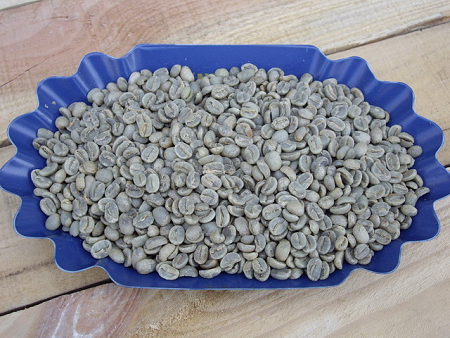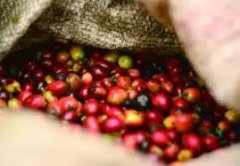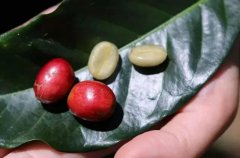Mexican coffee is an organic certified coffee. Mexican coffee beans are grown.

For professional baristas, please follow the coffee workshop (Wechat official account cafe_style)
After drinking a lot of organic coffee, I feel that there is something missing, but since drinking Mexican organic coffee-Chiapas, it does make me feel different. Its aroma seems to put you in the fragrance of the forest. It is worth mentioning that Chiapas is also the No. 1 coffee bean rated by the SCAA American Coffee Institute in 2004. Mexican coffee is said to have been transplanted to Mexico by a Spaniard from the West Indies in the late 18th century. Mexican coffee is a kind of "essence washed" coffee beans, grown in humid jungle mountains. And these coffee estates are located in humid mountain areas at low elevations. Most of the products are sold to the United States. Generally speaking, Mexican coffee is comfortable, mellow, moderately acidic, slightly bitter and pleasant. Do you like to enjoy high-quality aroma? Do you like coffee with a bitter taste in the acid? Have a cup of Mexican coffee.
Guojia: Mexico
Producing area: Chiapas Plateau
Grading: Altura
Producer: OPCAAC Organic small Farmers production Organization
Treatment: traditional washing
Variety: Kaddura (Caturra)
Sea pull: 900m to 1100 m
Harvest time: October of each year to March of the following year
Mexico is one of the largest producers of organic certified coffee, mostly sold to the United States because of geographical factors. The country's coffee industry, which began in the 19th century and was introduced through Jamaica, is mainly planted with Arabica varieties, near Soconusco, which borders Guatemala on the Pacific coast. In the early 1990s, the southern state of Chiapas became the most important coffee producing region in Mexico, producing about 27 Mexican 00 tons of coffee a year, accounting for 45% of the country's production. More than 2 million of Mexicans depend on coffee for a living, and 75 per cent of Mexican coffee farmers work on less than two hectares of land. These small farmers produce about 30 per cent of the country's coffee each year, while the rest are produced by large or high-capacity farms. Since 1988, especially in Chiapas, the government has increased income by providing simple loans to farmers and encouraging the development of woodland to encourage poor coffee farmers to increase their yields and expand their planting areas.
Chiapas is located on the plateau at the southern tip of Mexico bordering Guatemala. In 1991, the Mexican National Institute conducted a study on the protection of the rights of local indigenous peoples and enhanced the protection of indigenous residents through the formulation of product trade regulations. under such purposes and conditions, cooperative organizations in various districts are springing up like bamboo shoots after a spring rain. OPCAAC, whose full name is Organizaci ó n de Productores de Caf é de Á ngel Albino Corzo, is an organic smallholder production organization in Chiapas. OPCAAC, founded in 1995, constructs a farm management system, emphasizes the open and transparent independent production and marketing information of coffee farmers, and sets standards to avoid over-exploitation of land. The organization provides its members with assistance in micro-loans, technical training, social activities, etc., and continues to pay attention to the development of organic agriculture and ecological protection. OPCAAC aims to create the value of the local coffee industry and improve the quality of life of local farmers through fair trade and eco-friendly agricultural production. OPCAAC members use environmentally friendly farming methods to reclaim land, establish sustainable economic and social management and improve the quality of their products through the development of regional organizations.
Flavor description: nuts, low acidity, spice cream, cool herbs, smooth and mild taste
Important Notice :
前街咖啡 FrontStreet Coffee has moved to new addredd:
FrontStreet Coffee Address: 315,Donghua East Road,GuangZhou
Tel:020 38364473
- Prev

Mexican garat Coffee is full of exotic places Mexican coffee beans taste
For professional baristas, follow the Coffee Workshop (official Wechat account cafe_style) Mexico is an exotic place with deserts, blue waters, mountains, huge cities and small villages. In recent years, the demand for high-quality coffee has greatly increased the interest of Mexican coffee buyers, which has helped to improve Mexico's transition from mixed coffee to single and organic features.
- Next

Introduction of Mexico-Aldura Coffee Maxico main Coffee producing areas in Mexico
Professional baristas exchange please pay attention to the coffee workshop (Wechat official account cafe_style) flavor and taste characteristics: soft, mellow and comfortable, with wine aroma. The average annual temperature in Mexico is 25-27. The coffee growing area in Mexico is close to Guatemala, and the main producing areas are Cora Begu and Aluca states. Most of the products are washed beans produced in the highlands, with good fragrance.
Related
- Detailed explanation of Jadeite planting Land in Panamanian Jadeite Manor introduction to the grading system of Jadeite competitive bidding, Red bid, Green bid and Rose Summer
- Story of Coffee planting in Brenka region of Costa Rica Stonehenge Manor anaerobic heavy honey treatment of flavor mouth
- What's on the barrel of Blue Mountain Coffee beans?
- Can American coffee also pull flowers? How to use hot American style to pull out a good-looking pattern?
- Can you make a cold extract with coffee beans? What is the right proportion for cold-extracted coffee formula?
- Indonesian PWN Gold Mandrine Coffee Origin Features Flavor How to Chong? Mandolin coffee is American.
- A brief introduction to the flavor characteristics of Brazilian yellow bourbon coffee beans
- What is the effect of different water quality on the flavor of cold-extracted coffee? What kind of water is best for brewing coffee?
- Why do you think of Rose Summer whenever you mention Panamanian coffee?
- Introduction to the characteristics of authentic blue mountain coffee bean producing areas? What is the CIB Coffee Authority in Jamaica?

